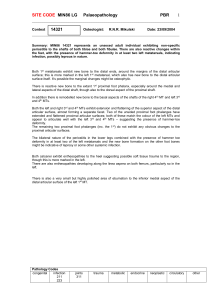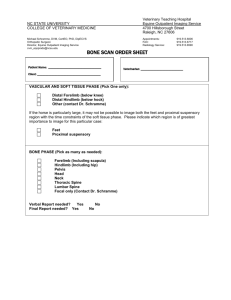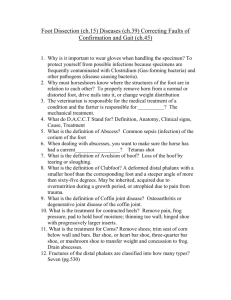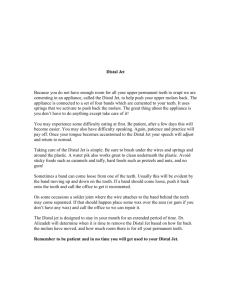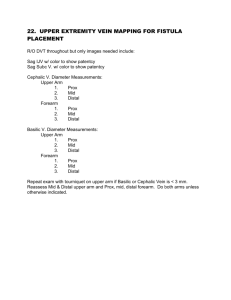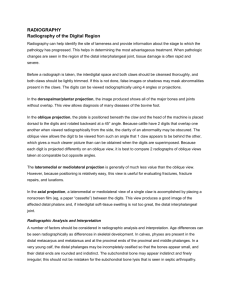distal forelimb - D-mis
advertisement
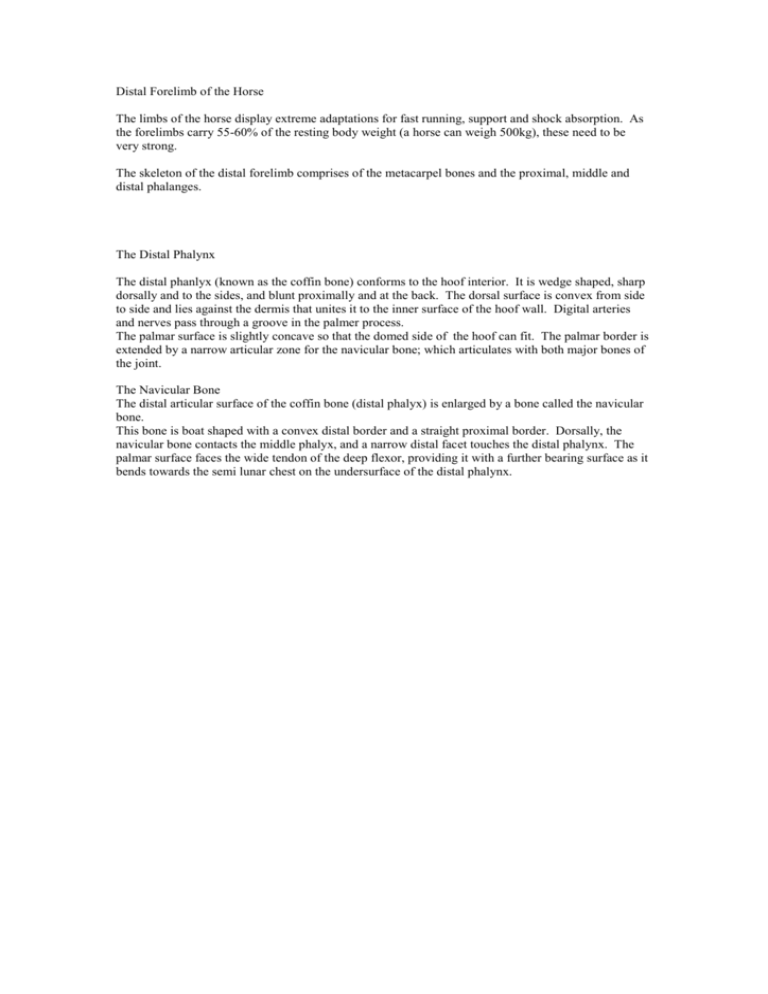
Distal Forelimb of the Horse The limbs of the horse display extreme adaptations for fast running, support and shock absorption. As the forelimbs carry 55-60% of the resting body weight (a horse can weigh 500kg), these need to be very strong. The skeleton of the distal forelimb comprises of the metacarpel bones and the proximal, middle and distal phalanges. The Distal Phalynx The distal phanlyx (known as the coffin bone) conforms to the hoof interior. It is wedge shaped, sharp dorsally and to the sides, and blunt proximally and at the back. The dorsal surface is convex from side to side and lies against the dermis that unites it to the inner surface of the hoof wall. Digital arteries and nerves pass through a groove in the palmer process. The palmar surface is slightly concave so that the domed side of the hoof can fit. The palmar border is extended by a narrow articular zone for the navicular bone; which articulates with both major bones of the joint. The Navicular Bone The distal articular surface of the coffin bone (distal phalyx) is enlarged by a bone called the navicular bone. This bone is boat shaped with a convex distal border and a straight proximal border. Dorsally, the navicular bone contacts the middle phalyx, and a narrow distal facet touches the distal phalynx. The palmar surface faces the wide tendon of the deep flexor, providing it with a further bearing surface as it bends towards the semi lunar chest on the undersurface of the distal phalynx.
